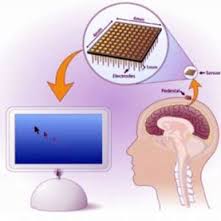Monthly Archives: March 2014
Why #Empathy Is Declining Among Students And What We Can Do
(The following excerpt from Why Empathy Is Declining In Students And What We Can Do by Tim Elmore recently appeared on psychology today.com. To view it in it entirety click on the link below.)
As we keep our ear to the ground, we continue to hear reports that emotional intelligence—and specifically empathy—is spiraling downward among kids. The sociology department at the University of Michigan, led by Dr. William Axinn at the Population Studies Center, tells us that college students today are approximately 40 percent less empathetic than they were just ten years ago. That’s quite a drop. I find it quite strange that in a generation more connected to each other than ever, young adults find it increasingly difficult to feel compassion toward each other.
Why is that?
Let me remind you of the realities in their world.
1. Screen time
As screen time goes up, empathy goes down.
You’re response: Balance screen time with face-to-face time and explain it.
2. Information Overload
Between commercial messages, texts, emails, Facebook posts, Instagrams, YouTube videos, etc, a student today receives about 1,000 messages every day.
Your response: Talk about this reality with your students and let them “own” how they must filter out unnecessary information so they can digest what really matters.
3. Consequential Behavior
Kids have grown up in a world where mistakes or tragedy they witness often doesn’t carry consequences.
Your response: The next time a student fails, be sure they feel the consequences.
4. Virtual Reality.
I’ve said this for years. Students have lots of experiences, but many are virtual.
Your response: Take your students to experience poverty or disease in a homeless shelter or a cancer ward.
5. Role Models.
Sometimes, students fail to develop empathy because they see a generation of adults lead with a jaded, cynical attitude.
Your response: Be intentional to talking over current events, like school shootings or victims of natural disasters and share your feelings about them.
Can a #Dog Understand Human Emotions?
Whenever I cry, my beagle, Sadie, jumps into my lap and nudges me with her nose. Is Sadie’s intuitiveness unique, or can dogs really understand human emotions?
According to a recent study, the answer is yes. Attila Andics, at the MTA-ELTE Comparative Ethology Research Group in Budapest, coaxed 11 canines into laying still in an MRI for 10 minutes at a time. While the pups listened to about 200 snippets of human voices, dogs’ yips, yaps, grunts and barks, and environmental din, the researchers looked at their brain activity.
They found that when Fido heard his doggy brethren vocalizing, a particular region in his brain became very active. The area is comparable to one that humans have, which sparks when hearing the sound of one’s own species.
And when Fido heard human and doggy voices, neurons in a small area in the back of the brain, behind the ear, fired. This patch of neurons in the dogs’ brains is similar to one in humans known as the “voice area.” In humans, this region aids in understanding the emotional intent of the speaker, helping us differentiate between sarcasm and disgust, for example. In dogs, that area responds to the emotion in voices. It doesn’t help them understand the words, but rather allows them to decipher the emotions—so Fido understands happiness and sadness.
Dogs don’t simply have a region analogous to humans; they actually act like humans, too. “When you looked at how dogs respond to emotion cues in sounds, it’s very similar to how humans respond,” Andics told NPR.
The dogs also pick up on context clues. “For instance, when you laugh, ‘Ha ha ha,’ it has short, quick pieces,” Andics said. “But if you make the pieces longer, ‘Haaaa, haaaa, haaaa,’ it starts to sound like crying or whining. This is what people—and dogs—pay attention to.”
http://www.mentalfloss.com/article/55625/can-dogs-understand-human-emotions
Charlie Brown Is Back… Peanuts #Film Trailer
#Parenting In The Age Of #Apps: Is That iPad Help Or Harm?
(The following excerpt from Parenting In The Age Of Apps: Is That iPad Help Or Harm? by NPR staff recently appeared on http://www.npr.org. To view it in its entirety click on the link below.)
When it comes to media, parents all want to know: How much is too much for my child?
Dr. Dimitri Christakis, a pediatrician, professor and father of two, has spent a lot of time thinking about the effects of media on young children. Christakis tells NPR’s Arun Rath that not all TV is bad.
Some children’s programs are educational and engaging, he says. But if a TV show is overstimulating, it can lead to developmental problems.
Enter The iPad
The question of how much screen time is good for kids has only gotten more complicated with the arrival of interactive devices like smartphones and tablets, Christakis says.
“We have to take a step back and remind ourselves that iPads are only 4 years old. And most of us can’t even conceive of a world that existed before iPads; they feel like they’ve been here forever.”
Because tablet technology is so new, pediatric researchers don’t have a lot of data on how touchscreen devices affect children.
“Unfortunately, the pace of research is much, much slower than the pace of technological advances,” Christakis says.
But pediatricians are looking closely at interactive media’s effect on children. Relying on admittedly limited evidence and a strong theoretical framework, Christakis is comfortable making a recommendation to parents.
“Judicious use of these touchscreen technologies is fine and may even be beneficial,” he says.
All Thing In Moderation
Of course all screen time, interactive or not, comes at the expense of some other activity, whether it’s playing with other children or spending time with a parent.
With tablet technology, screen time doesn’t necessarily mean time spent alone. Why not integrate the devices into family time?
“There’s no reason whatsoever that a caregiver can’t use an app with their child,” he says. “It’s a great opportunity for what we call ‘joint attention’ — the interactions between a child and a caregiver, the back-and-forth, which is critical not just to language development, but brain development.”
Sound familiar? It should. This, says Christakis, isn’t much different from sitting down and reading a book with your child.
Time to teach Persistence and Resilience to US Kids? #education
Experts define grit as persistence, determination and resilience; it’s that je ne sais quoi that drives one kid to practice trumpet or study Spanish for hours — or years — on end, while another quits after the first setback.
“This quality of being able to sustain your passions, and also work really hard at them, over really disappointingly long periods of time, that’s grit,” says Angela Duckworth, a psychology professor at the University of Pennsylvania who coined the term “grit” — and won a MacArthur “genius grant” for it.
“It’s a very, I think, American idea in some ways, really pursuing something against all odds,” she says.
http://www.npr.org/2014/03/17/290089998/does-teaching-kids-to-get-gritty-help-them-get-ahead
The Plug-and-Play Brain
(The following excerpt from The Plug-and-Play Brain by Gary Marcus and Christof Koch recently appeared on onlinewsj.com. To view it in its entirety click on the link below.)
What would you give for a retinal chip that let you see in the dark or for a next-generation cochlear implant that let you hear any conversation in a noisy restaurant, no matter how loud? Or for a memory chip, wired directly into your brain’s hippocampus, that gave you perfect recall of everything you read? Or for an implanted interface with the Internet that automatically translated a clearly articulated silent thought (“the French sun king”) into an online search that digested the relevant Wikipedia page and projected a summary directly into your brain?
Science fiction? Perhaps not for very much longer. Brain implants today are where laser eye surgery was several decades ago. They are not risk-free and make sense only for a narrowly defined set of patients—but they are a sign of things to come.
Unlike pacemakers, dental crowns or implantable insulin pumps, neuroprosthetics—devices that restore or supplement the mind’s capacities with electronics inserted directly into the nervous system—change how we perceive the world and move through it. For better or worse, these devices become part of who we are.
Neuroprosthetics aren’t new. They have been around commercially for three decades, in the form of the cochlear implants used in the ears (the outer reaches of the nervous system) of more than 300,000 hearing-impaired people around the world. Last year, the Food and Drug Administration approved the first retinal implant, made by the company Second Sight.
Both technologies exploit the same principle: An external device, either a microphone or a video camera, captures sounds or images and processes them, using the results to drive a set of electrodes that stimulate either the auditory or the optic nerve, approximating the naturally occurring output from the ear or the eye.
An early generation of enhancement implants might help elite golfers improve their swing by automating their mental practice. A later generation might allow weekend golfers to skip practice altogether. Once neuroscientists figure out how to reverse-engineer the end results of practice, “neurocompilers” might be able to install the results of a year’s worth of training directly into the brain, all in one go.
That won’t happen in the next decade or maybe even in the one after that. But before the end of the century, our computer keyboards and trackpads will seem like a joke; even Google Glass 3.0 will seem primitive. Why would you project information onto your eyes (partly occluding your view) when you could write information into your brain so your mind can directly interpret it? Why should a computer wait for you to say or type what you mean rather than anticipating your needs before you can even articulate them?
By the end of this century, and quite possibly much sooner, every input device that has ever been sold will be obsolete. Forget the “heads-up” displays that the high-end car manufactures are about to roll out, allowing drivers to see data without looking away from the road. By the end of the century, many of us will be wired directly into the cloud, from brain to toe.
Will these devices make our society as a whole happier, more peaceful and more productive? What kind of world might they create?
It’s impossible to predict. But, then again, it is not the business of the future to be predictable or sugarcoated. As President Ronald Reagan once put it, “The future doesn’t belong to the fainthearted; it belongs to the brave.”
The augmented among us—those who are willing to avail themselves of the benefits of brain prosthetics and to live with the attendant risks—will outperform others in the everyday contest for jobs and mates, in science, on the athletic field and in armed conflict. These differences will challenge society in new ways—and open up possibilities that we can scarcely imagine.
Tiger For #Caturday #Wildlife
Stirring The #DesignerBaby Pot
(The following excerpt from Stirring The Designer Baby Pot by The Hastings Center recently appeared on http://www.sciencedaily.com. To view it in its entirety click on the link below.)
From genetic and genomic testing to new techniques in human assisted reproduction, various technologies are providing parents with more of a say about the children they have and “stirring the pot of ‘designer baby’ concerns,” writes Thomas H. Murray, President Emeritus of The Hastings Center, in a commentary in Science.
Murray calls for a national conversation about how much discretion would-be parents should have. “Preventing a lethal disease is one thing; choosing the traits we desire is quite another,” he writes.
He discusses public hearings two weeks ago by the United States Food and Drug Administration to consider whether to permit human testing of a new method of assisted reproduction — mitochondrial manipulation — that would prevent the transmission of certain rare diseases and perhaps address some causes of female infertility. At issue is the safety of the technology, as well as its ethical implications.
Mitochondrial manipulation creates an embryo with the nuclear DNA from the prospective mother and father (which contains most of the genetic material) and the mitochondrial DNA (containing 37 genes) from a donor without mitochondrial defects. Among the ethical concerns is that daughters produced by this procedure could pass down the mitochondrial DNA to their children. “Up to now, the United States has not allowed such genetic changes across generations,” Murray writes.
He says that the FDA’s discussion is the latest development that “tapped into a simmering controversy over what it means to have a child in an era of increasing convergence among genetic, genomic, and reproductive technologies.” Those technologies include preimplantation genetic diagnosis (genetic analysis of embryos before implantation via in vitro fertilization) and prenatal screening to detect health problems in the fetus, including the prospects of a blood test of a pregnant woman to screen fetal DNA in her blood.
“Of all the possible choices prospective parents might make, sex selection for non-medical purposes has prompted the strongest policy response, “Murray writes. “It is prohibited in at least 36 countries, but not in the United States.” He notes that “conflicts over the legal and moral status of embryos and fetuses have discouraged American legislators from proposing sensible regulations, lest they be drawn in to the abortion debate.”
The absence of federal legislation has left the regulation of sex selection up to professional societies. But they have different guidelines, reflecting “clashing ethical frameworks for thinking about parenthood in the genomic era.”
Murray calls for a national conversation about current and emerging technologies shaping the choices that parents have, beginning with an examination by the U.S. Presidential Commission for the Study of Bioethical Issues. “It will not be easy to avoid the quicksand of the abortion debate,” he writes, “but it would be a great public service to provide a sober assessment of the choices that would-be parents increasingly face, and to encourage a respectful dialogue about the meaning of parenthood and the worth of a child so that parents and children can flourish together.”
http://www.sciencedaily.com/releases/2014/03/140313142710.htm
Sheryl #Sandberg Launches “BanBossy Campaign To Empower #Girls
(The following excerpt from Sheryl Sandberg Launches “Ban Bossy Campaign To Empower Girls To Lead by Cynthia McFadden and Jake Whitman recently appeared on abcnews.go.com. To view it in its entirety click on the link below.)
Can banning one school-yard word really change the world? Sheryl Sandberg says yes.
Sandberg — the chief operating officer of Facebook and author of the best-selling book “Lean In” — is spearheading the launch of a campaign today to ban the word “bossy,” arguing the negative put-down stops girls from pursuing leadership roles.
“We know that by middle school, more boys than girls want to lead,” Sandberg said, “and if you ask girls why they don’t want to lead, whether it’s the school project all the way on to running for office, they don’t want to be called bossy, and they don’t want to be disliked.”
Sheryl Sandberg: Let’s Ban “Bossy”
Chavez said she got involved immediately after receiving a call from Sandberg, and believes the Girl Scouts are ideal partners for the new initiative. More than half of all American women were once Girl Scouts and two million girls are currently in scouting, she pointed out.
“Imagine a classroom in America where 50 kids are present: 25 girls, 25 boys,” Chavez said.
“And the teacher walks into this classroom and says: ‘Boys and girls, I have this really hard, difficult program that I need to solve that’s gonna impact this country.’ She writes the problem on the board and then turns around and escorts 24 of the 25 girls out of the room. … She leaves one girl and 25 boys to solve that equation. That’s what’s happening every day in this country. Why wouldn’t we want more girls to be opting in to building the right solutions this country.”
The goal of the “Ban Bossy” campaign is to help girls and women feel more confident and comfortable as leaders.
“I was called bossy when I was in ninth grade,” Sandberg recalled. “My teacher took my best friend Mindy aside and she said, ‘You shouldn’t be friends with Sheryl. She’s bossy.’ And that hurt.”
Sheryl Sandberg: How “Bossy” Discourages Young Girls
While she and the other women leaders she is recruiting were able to persevere despite the taunt, many little girls can’t, she said.
“If you look at the world, women do 66 percent of the work in the world. Woman produce 50 percent of the food. Women make 10 percent of the income and women own 1 percent of the property. We are 50 percent of the population. We are 5 percent of the Fortune 500 CEOs,” Sandberg said. “We are 17 percent of the board seats. We are 19 percent in Congress. That’s not enough for 50 percent of the population. We live in a world that is overwhelming run and owned by men.”
During an interview at Facebook headquarters, she and Chavez are quick to point out that they are not encouraging rude, mean-girl behavior or bullying.
“Leadership is not bullying and leadership is not aggression,” Sandberg said. “Leadership is the expectation that you can use your voice for good. That you can make the world a better place.”
http://abcnews.go.com/US/sheryl-sandberg-launches-ban-bossy-campaign-empower-girls/story?id=22819181








